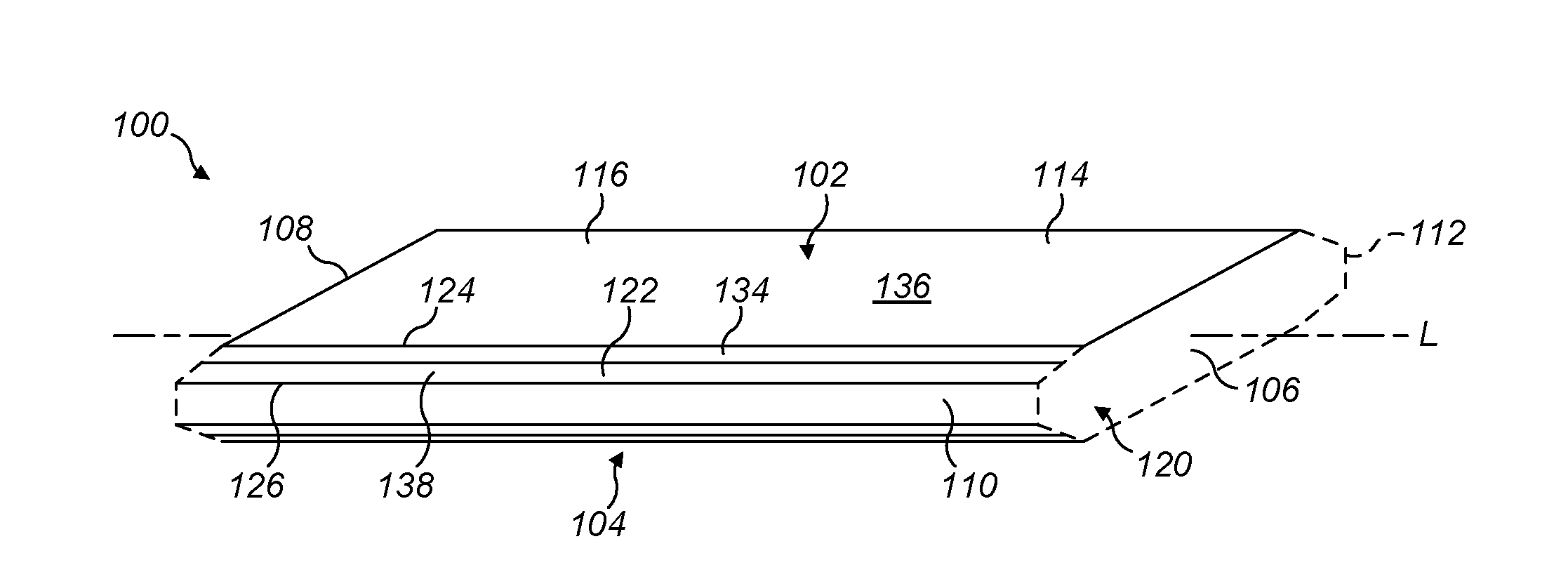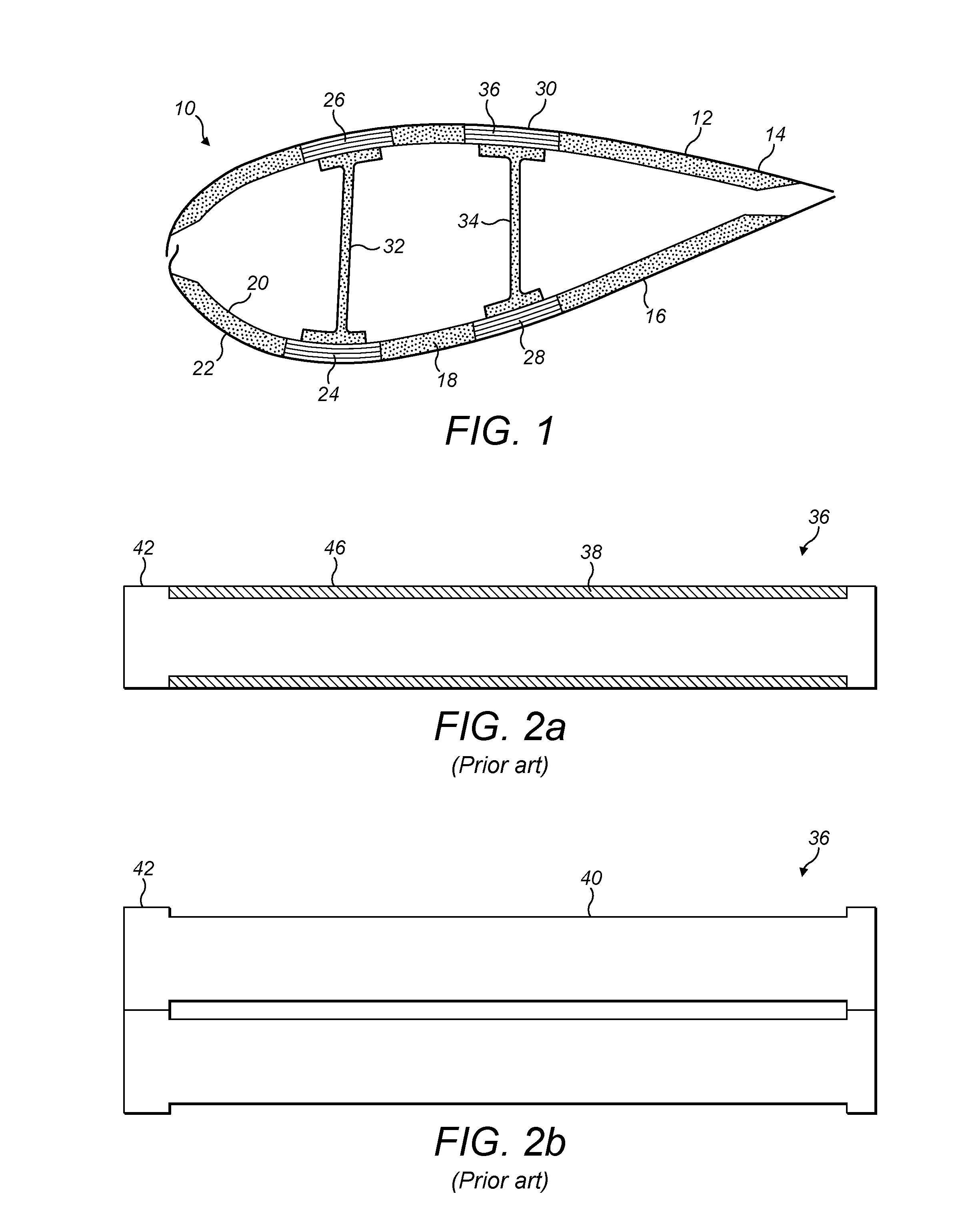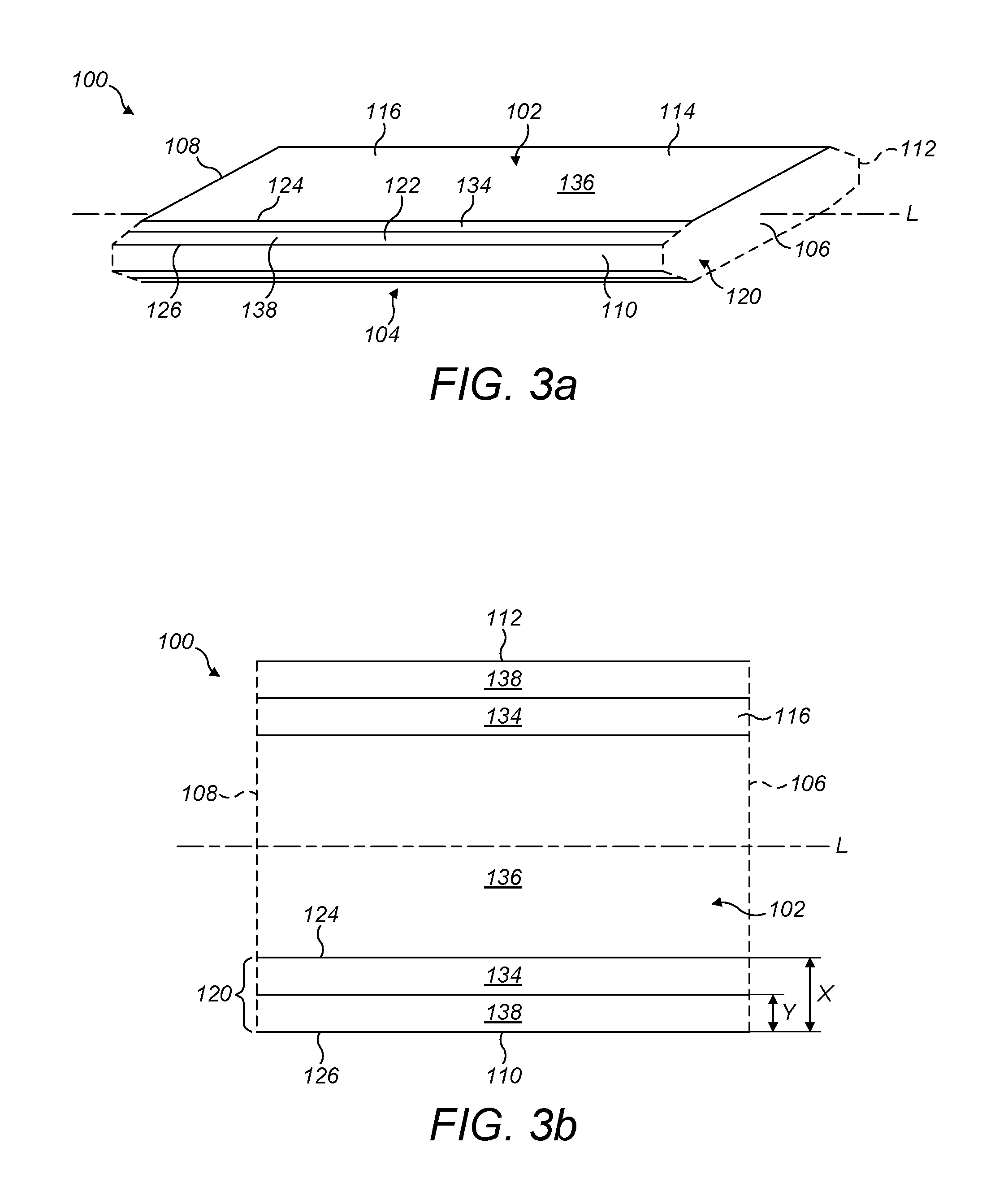Wind turbine blades and method of manufacturing the same
a technology of wind turbine blades and wind turbine blades, which is applied in the direction of motors, applications, household objects, etc., can solve the problems of poor bonding between strips, failure of blades in use, and resin infusion,
- Summary
- Abstract
- Description
- Claims
- Application Information
AI Technical Summary
Benefits of technology
Problems solved by technology
Method used
Image
Examples
Embodiment Construction
[0055]A pultruded fibrous composite strip typically has a thickness of approximately 5 mm, and a peel ply layer typically has a thickness of approximately 50 to 500 microns. It will be appreciated that the drawings provided are not scale representations, and particular features of the strip have been greatly exaggerated for illustrative purposes.
[0056]FIGS. 3a, 3b and 4a show a pultruded fibrous composite strip 100 for stacking with one or more similar strips to make a spar cap for a wind turbine blade. The strip 100 is made of a fibre-reinforced plastic, and comprises unidirectional carbon fibres aligned in a resin matrix.
[0057]The strip 100 is shaped substantially as a flat cuboid extending along a longitudinal axis L, the cuboid having a length substantially greater than its thickness or width. The strip 100 comprises first and second sides 102, 104 that extend longitudinally. The sides 102, 104 are joined by opposed transverse edges 106, 108 that are substantially perpendicular ...
PUM
| Property | Measurement | Unit |
|---|---|---|
| Thickness | aaaaa | aaaaa |
Abstract
Description
Claims
Application Information
 Login to View More
Login to View More - R&D
- Intellectual Property
- Life Sciences
- Materials
- Tech Scout
- Unparalleled Data Quality
- Higher Quality Content
- 60% Fewer Hallucinations
Browse by: Latest US Patents, China's latest patents, Technical Efficacy Thesaurus, Application Domain, Technology Topic, Popular Technical Reports.
© 2025 PatSnap. All rights reserved.Legal|Privacy policy|Modern Slavery Act Transparency Statement|Sitemap|About US| Contact US: help@patsnap.com



